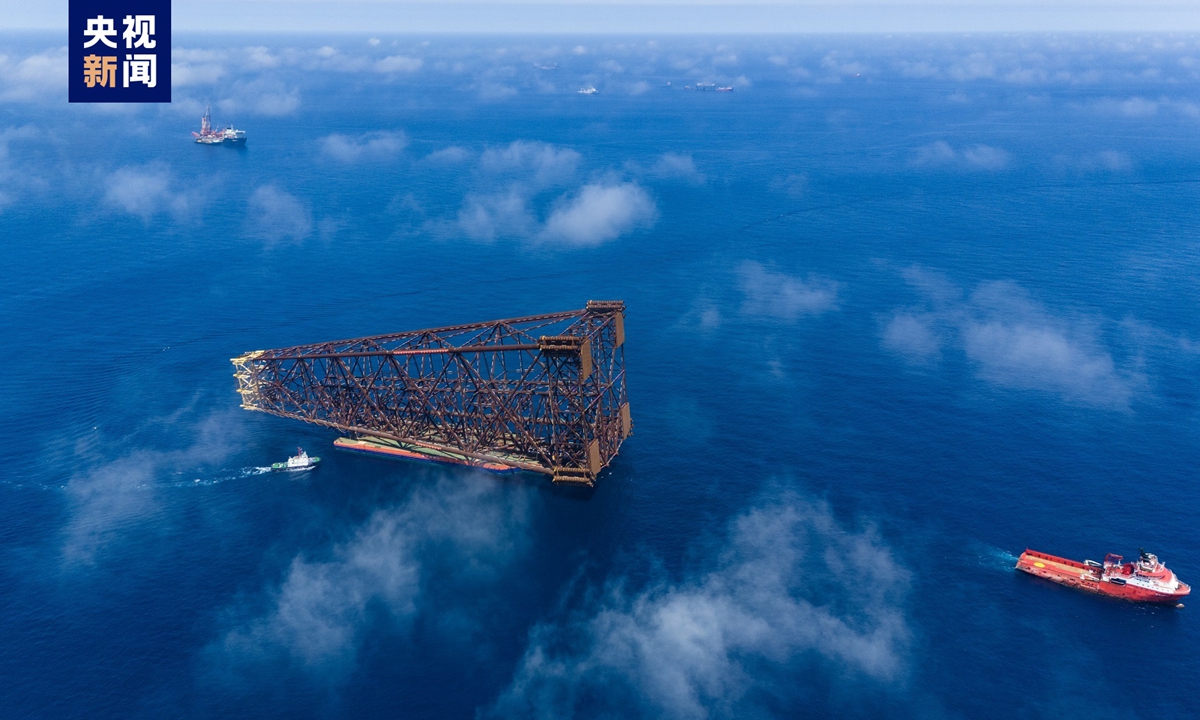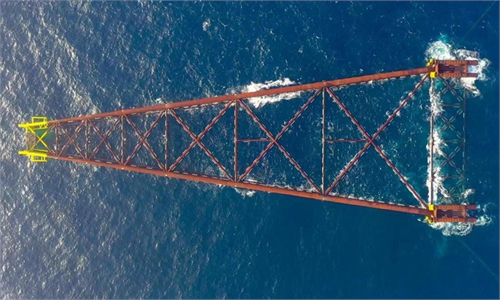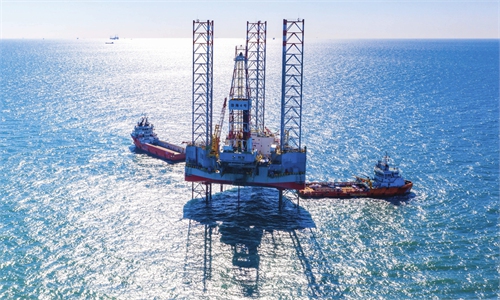China launches record-breaking deep-water jacket Haiji-2, marking a milestone in offshore oil and gas exploration

Photo: China Media Group
Asia's first deep-water jacket, Haiji-2, was launched in the Pearl River Mouth Basin of the South China Sea on Monday, setting multiple records in Asia, which will advance the country's offshore oil and gas exploration capability.
The project sets a series of records in Asia in terms of structural height, weight, operating depth, and construction speed, showcasing that China's offshore marine engineering has achieved high-level technological self-reliance and improvement.
With a total height of 428 meters and weighing more than 50,000 tons, Haiji-2 will become Asia's tallest offshore oil and gas production platform, supporting the development of the deep-water Liuhua Oil Field, the China Media Group reported.
The jacket platform serves as the foundation for supporting and fixing the huge body of offshore oil and gas platforms where seabed conditions are challenging. It's a widely used marine oil and gas development equipment in the world, according to the report.
Haiji-2 is set to be deployed in the Liuhua 11-1 oilfield, in the deep waters of the South China Sea, the largest carbonate reef oilfield found offshore in China, with over 100 million tons of proven oil and gas reserves, according to Chinese media reports.
The mega project was designed and built independently by China National Offshore Oil Corp (CNOOC), the country's top offshore oil and gas producer, designed to withstand extreme sea conditions that occur once a century.
The project faced major engineering challenges during its construction and installation, such as complex design calculation, high technical requirements, and harsh sea conditions. Its floating crane was confronted with high operational risks by pushing to its limits due to the weight and height of the structure.
On March 24, the jacket platform began its offshore installation operations, marking Asia's first fixed pipeline structure installation in waters 300 meters below the surface. Its completion represents the country`s capability of independent design and construction for large deep-water jacket platforms has reached an advanced level.
In the past decade, China has ramped up efforts to build mega infrastructure while improving innovation capabilities in a bid to ensure the country's energy security.
Haiji-2's predecessor, the Haiji-1 platform, which entered operation in 2022, marked the first time that China exploited offshore oil and gas employing such a model. It turned out to significantly bring down engineering costs and boost oil recovery and economic efficiency.
In 2021, the Shenhai-1, the world's first 100,000-ton deep-sea semi-submersible oil production and storage platform, was put into operation, signaling that China's offshore oil and gas exploration capacity had entered an advanced level.
Global Times


